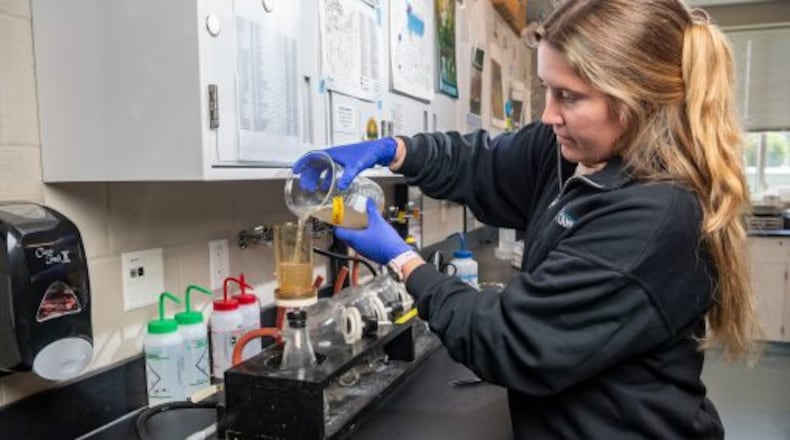The high algae levels are caused by an overabundance of nutrients, mostly from farming runoff, according to Wright State, but having wetlands around the lake can filter out many of the nutrients before they reach the lake.
Ohio’s wetlands have declined by 90% in the last two centuries, and the state is now trying to bring back some of those wetlands to protect the many rivers and lakes in the state.
The 10-acre plot was sold for $520,000, and Wright State contributed $130,000 to the project, leaving the university with $390,000 in net proceeds.
Stephen Jacquemin, a professor of biology at the Lake Campus, has been conducting water quality testing with his students at Grand Lake St. Marys and surrounding wetlands for almost a decade.
“They serve a variety of import functions from recharging groundwater to important public recreation outlets,” said Jacquemin, a nationally known expert on watersheds. “We need to restore some of these wetlands, and maybe not every acre will be restored, but there needs to be momentum in the opposite direction.”
About four years ago, Jacquemin suggested a natural wetland site on the north side of the lake, close to the Lake Campus, which would aid with water runoff and be a location for students to conduct research.
The 10-acre plot of land, which wasn’t being used, would be sold to the lake’s facility authority through a grant program called the Clean Ohio Green Space Conservation Program.
Theresa Dirksen, agricultural and natural resources director of Mercer County, said the plan is to get the land properly surveyed and get the sale agreement completed by the end of the year. Work on the wetland is expected to begin next spring.
When completed, the 10-acre wetlands project will impact about 100 acres of watershed draining into Grand Lake St. Marys.
Dirksen said Wright State data shows that these kind of wetland projects are working and will be valuable as the nutrients flowing into Grand Lake St. Marys continues to decline.
“The lake is improving,” said Dirksen. “We just need to keep the momentum going, and the more we can work with people around the lake the better we’re going to be.”
About the Author

